The Beginner’s Guide: Wes Craven, Director
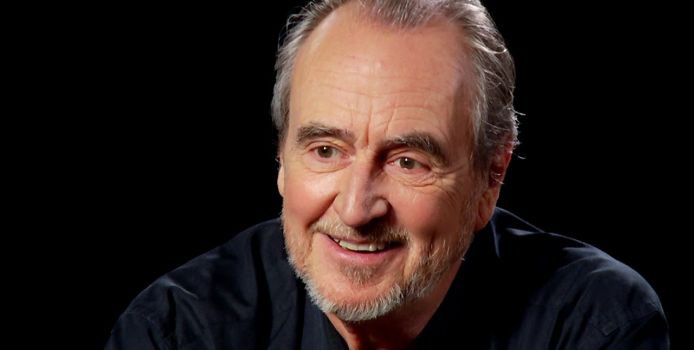
Rachael Sampson is a Northern screenwriter and critic based in…
When you think of horror movies, one name should spring to mind: Wes Craven. He reinvented the teen horror genre and made it his own, alongside creating the most feared character in the horror genre: Freddy Krueger. He has written, directed and produced some of the most famous and terrifying horrors of all time by challenging and manipulating his audiences. Not only has he severely effected audiences with his shocking, slashed-up work, Craven is also the man responsible for giving us some of the biggest names in the business, by casting the then unknown Johnny Depp in his first major movie role in 1984, playing the character of Glen Lantz in the first installment of A Nightmare on Elm Street.
In his own words, horror films are typically about “the terror of entering adulthood because you think adulthood is actually evil.” And this is something he has indefinitely captured. His contribution to film over the years has given mass amounts of thrill, fear and excitement to horror lovers globally. Directors will be replicating Craven’s unique and shocking style for years to come, however nobody can capture fear quite like him. He always will be an invaluable and irreplaceable writer, director, producer and man. This article pays tribute to the works of Wes Craven, exploring and discussing the best pulse-raising and blood-soaked pictures created by the sorely missed master of horror over the years.
A Nightmare on Elm Street (1984-1991)
It has to be said that Craven has caused many teenagers, (and adults) to have sleepless nights, especially after watching this horror, as he plays and twists one element and bodily function that we cannot control in the 1984 timeless classic, A Nightmare on Elm Street. Freddy Krueger: A man covered in burns who has knives for fingers comes for you in your sleep and takes over your dreams in a bid to kill you in the most gruesome way possible. A simple synopsis, yet it still sends shivers down the spine.
Many audiences, when watching horrors, cannot help but shout at the screen and say “get out of there”, “call the police” or as Craven puts it in Scream (1996), the film usually focuses on “Some stupid killer stalking some big-breasted girl who can’t act who is always running up the stairs when she should be running out the front door. It’s insulting”. In A Nightmare on Elmstreet, however, the protagonist has nowhere to run or hide, as you cannot escape sleep, therefore you cannot escape the wrath of Krueger, played by the talented Robert Englund.
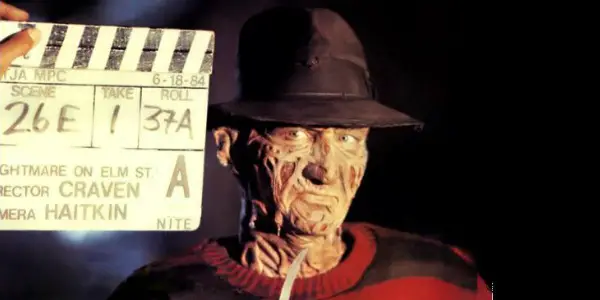
Not only is the protagonist ignored and dismissed by police and family, all of her friendsget killed by Krueger one by one, causing her to be totally alone, another common fear, and one that Craven isn’t afraid of manipulating. Whilst the action on-screen plays out, we are taunted by the creepy soundtrack, and lyrics, “one…two…Freddy’s coming for you” sang by little girls in a nursery rhyme pattern, and this method of contrapuntal sound really contrasts with the images of people being sliced and hacked, causing for an even more disturbing effect.
This film had great success at the box office and was the start of an eight film franchise. Craven‘s Krueger proved to be incredibly successful in scaring audiences, much so that Krueger became part of the horror series Friday 13th (1980-2009), starring next to Voorhees in Freddy Vs. Jason (2003). We also get a cameo from the director himself in Wes Craven’s New Nightmare (1994), playing himself as the director of the first movie ten years later. This time the actress who plays the leading role of Nancy Thompson (Heather Langenkamp) is now playing herself, and the fictitious character of Freddy Krueger comes alive and haunts the actress in her dreams, thus insinuating to audiences that there is no escaping Freddy, and he is in fact real… Many sleepless nights followed after watching that instalment. Well done Wes.
Scream (1996-2011)
One of Craven’s better known franchises, Scream (1996-2011) explores the quiet town of Woodsboro as it becomes the hunting ground for a serial killer, who has seen one too many horror movie. This psychopath stalks victims, taunts them with horror film trivia questions, then rips them to bloody shreds. Alongside a chilling storyline, Craven recruits a perfect cast, including Neve Campbell, Courtney Cox, David Arquette, Rose McGowan and the hilarious Jamie Kennedy.
In this movie Craven manages to replicate everyone’s teenage years in a slight comic/soap opera style, showing the variety of characters and personalities in one friendship group, the friends that us as an audience have had and can relate to looking at our own teenage years: the shy girl, the joker, the cool guy and the cheerleader, therefore we can put ourselves in their shoes and follow “what would happen”, so to speak, if the killer came to our own towns. This almost includes you in the narrative, making it feel more real, personal, and ultimately more frightening.
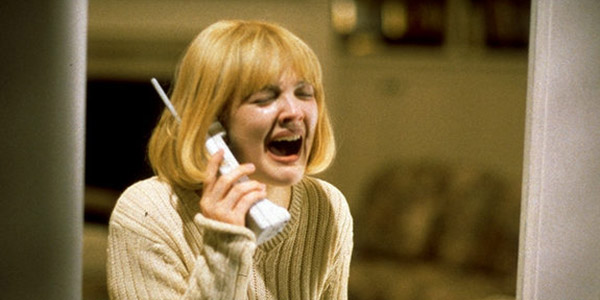
Within the first five minutes of Scream, Craven gives himself a movie plug as Drew Barrymore‘s character tells the mysterious caller (a.k.a the killer) that her favourite horror film is A Nightmare on Elm Street. A clever move by Craven, using his previous exploits as a premise and base for his next franchise. As the first fifteen minutes of the film focuses on Casey Becker, audiences instantly assume she is the protagonist and main focus in the film, therefore to see her get butchered and hung from a tree just after meeting her shows Craven isn’t going to hold back, and that the characters you love aren’t necessarily the ones who are going to stick around. The films essentially follow a ‘whodunnit’ storyline and audiences try and piece it all together, however in the world of Wes Craven, it isn’t as easy as that, for the ending is almost never what you expect.
Craven once said that horror films don’t create fear, they release it, and that he likes to address the fears of his culture: “I believe it’s good to face the enemy, for the enemy is fear.” Therefore proving he had no limits or restrictions when creating his movies, and when looking at the Scream franchise, those words apply, with the protagonist Sidney Prescott (Neve Campbell) going face to face with the killer in each film, combating them head on, staring death and fear in the face. Sidney’s fearless attitude and strong-willed ways make the Scream movies somewhat of a feminist exploit, as we see a strong and independent woman battle and conquer her demons.
The Hills Have Eyes (1977-1985 and 2006-2007)
The first horror in the franchise (1977 and 2006) explores a family as they take a road trip in attempt to reach California, however, the trip takes a terrifying turn when the travelers become stranded in the barren atomic zone established by the U.S. government. Unfortunately, this family discover that the wasteland is far from uninhabited, as a group of bloodthirsty, deformed creatures prowl the area in search for their next victims. Craven’s original two-part movie series was made in 1977 and 1985, was modernised by directors Alexandre Aja and Martin Weisz. Although Craven‘s original adaptations of the story proves to be shocking and full of suspense, what has to be commented on is the writing for the 2007 adaptation, The Hills Have Eyes part 2.
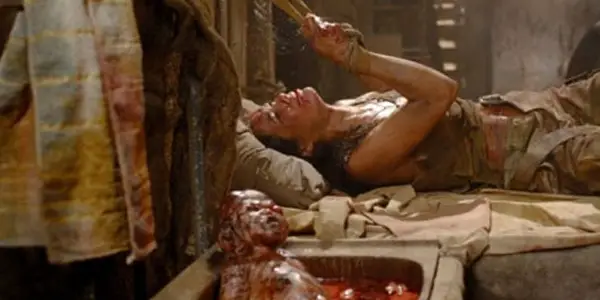
During a routine patrol of the New Mexican desert, members of the National Guard unit stop at a deserted research camp. Picking up a distress signal emanating from a mountain range, they set out to investigate, unaware that the tribe of vicious, cannibalistic mutants await their arrival. While it can be debated that this movie specifically should be ranked higher than the other movies in the series is because Wes Craven wrote this script with his son, Jonathan, and it is evident that The Cravens inherently have a knack for creating horror. One scene in particular sticks in the mind when thinking about this film, and it’s the toilet scene.
When Army soldier Napoleon (Michael McMillian) goes to the portaloo, he is met by a hand coming out of the sewage, when he and Amber investigate further, a man climbs out of the toilet covered in waste, a completely gross and disgusting image, and then when Amber (Jessica Stroup) asks, “who is that guy?!” Napoleon quickly replies “Shit man the barbarian, I have no idea!” Comedy collides with horror in the most unpredictable way, both hilarious and horrifying all at once. To write something witty and gut wrenching at the same time takes some skill, and with the help of Martin Weisz, the father-and-son duo’s vision came to life.
Red Eye (2005)
Red Eye isn’t your typical Wes Craven gory teen scream, in fact, it fits into the genre of thriller more than horror, although the concept and story are quite chilling. In the wake of her grandmother’s funeral, hotel manager Lisa Reisert (Rachel McAdams) is waiting to fly back home when she meets Jackson Rippner (Cillian Murphy) at check-in. She thinks it fate that they’re seated together on the plane, but soon learns that Rippner hopes to assassinate the head of Homeland Security, but to do so he needs Lisa to reassign the official’s room number at her hotel. As insurance, Jackson has kidnapped Lisa’s father (Brian Cox) and has a hit man ready to kill him if Lisa doesn’t do exactly as he says. If that wasn’t stressful and scary enough, all this occurs at 40,000 feet up in the air on the Red Eye. This movie is a perfect example of a great thriller, it keeps you on the edge of your seat throughout and Lisa’s cunning and sly attempts to free herself, the head of Homeland Security and her father cannot go unsaid.
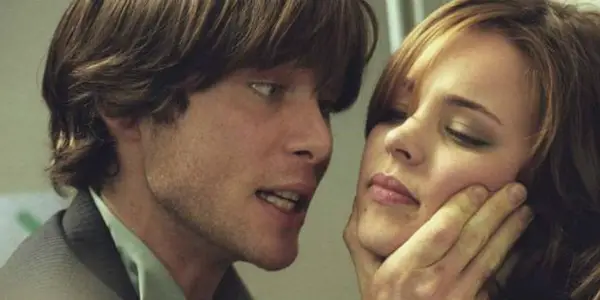
This is the first thriller by Craven, and he said he would have loved to do a thriller a long time ago, though the opportunity never arose, and when he came across this script he was instantly drawn to it. Craven said that he found the subject matter very relevant and that Red Eye had a good resolution to it, alongside being entertaining without exploiting the story. He also added to the press at the premiere for the movie that “it will help people sleep better at night“- giving his audiences a totally happy ending for once, and a movie that isn’t as terrifying as his more notorious works, e.g. The Last House on the Left (1972).
People love Craven‘s movies because when they leave the theatre they feel altered in some way. With this new genre for the director, people were mostly intrigued by the film since it’s more of a psychological thriller; fans wondered how he would portray that. Red Eye still has the signature Wes Craven touches, for example, the brawl at the end of the film between Murphy and McAdams is very Scream-esque, and the memorable scene where Rippner gets stabbed in the windpipe with a Frankenstein pen allows audiences to walk away feeling like they have definitely just seen a Wes Craven movie.
Other Popular Works
Other notable films by Wes Craven include: Vampire in Brooklyn (1995), a dark comedy following a vampire’s hunt to find the perfect mate, starring Eddie Murphy and Angela Bassett; The Last House on the Left (1972), Craven’s first ever feature film: Two girls get kidnapped and left for dead by an escaped convict and his crew, when suddenly the parents of one of the girls unwittingly offer to shelter the thugs. The film was remade in 2009 and sticks to the original story by Craven, who brought a nightmarish situation to life on his very first try.
In Conclusion
Wes Craven has given horror fanatics so much thrill, tension, suspense and copious amounts of enjoyment over the last four decades. His unique mind will be deeply missed as he was a cherished asset in the industry. His words of wisdom and encouragement to aspiring movie makers out there have been invaluable: “Take the first job you can in the industry you want to get into. The job doesn’t matter, getting your foot in the door does.” His Twitter account is filled with nothing but praise and positive comments regarding other filmmakers’ projects. Craven was incredibly passionate about film and its ability to shape and enforce messages on a larger scale, and his films definitely did that, showing people that they can conquer their inner and outer demons by staring them right in the face.
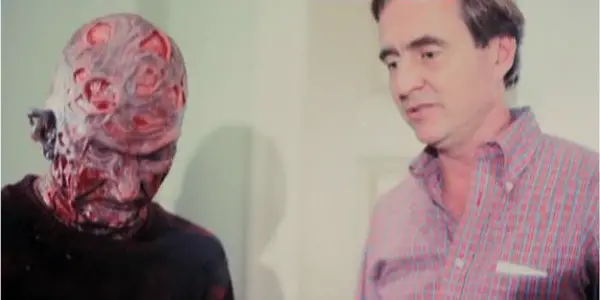
Bryan Singer, director of the X-Men movies recently said on Instagram: “We first met when I was 19 and he spoke at Roy Frumkis film class at SVA. He brought choice scenes from the original A Nightmare on Elm Street. His lecture was inspiring. Of many things he said, I remember one in particular: ‘You never know what will truly scare someone. You can spend tens of thousands of dollars on a rotating room just so a lot of blood will shoot into the air, and audiences will say, ‘cool.’ Or you can spend $12.00 on a latex tongue and have it lick someone from the inside of a telephone, and the audience will scream their heads off and nearly leap out of their seats.’ I will mourn the loss of this legend.”
Craven’s movies will continue to shock, petrify and creep out audiences for years to come. Although he has gone he will never be forgotten, and he will live on through the art of his spine-chilling movies. R.I.P Wes Craven (1939-2015).
What’s your favourite Wes Craven Movie? Leave your thoughts and comments below!
(top image: Wes Craven during an interview with Mick Garris)
Does content like this matter to you?
Become a Member and support film journalism. Unlock access to all of Film Inquiry`s great articles. Join a community of like-minded readers who are passionate about cinema - get access to our private members Network, give back to independent filmmakers, and more.
Rachael Sampson is a Northern screenwriter and critic based in London. Her latest film is currently in post production and she has 2 shorts cooking in the oven. Rachael is also a published short story author and theatre maker. She often finds herself daydreaming about Andrea Arnold's filmography and firmly believes that Inglourious Basterds is the greatest movie ever made.













